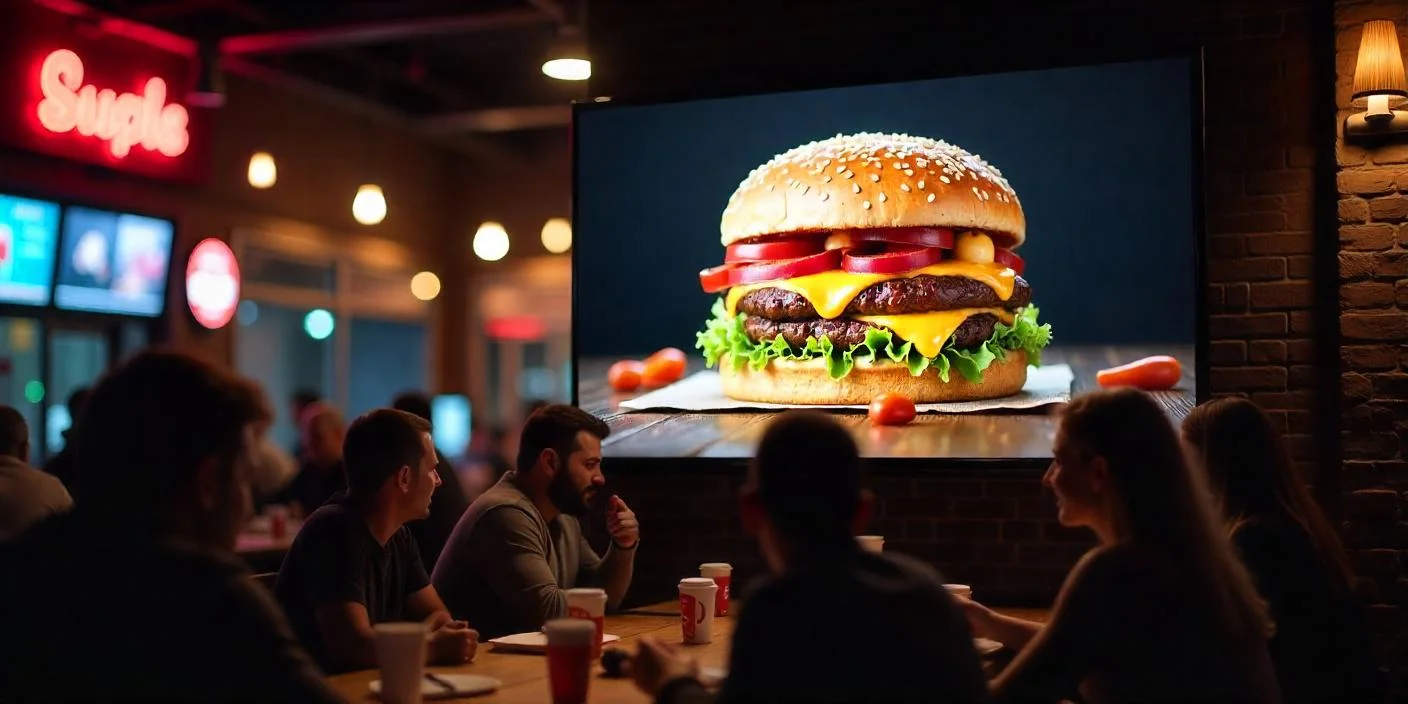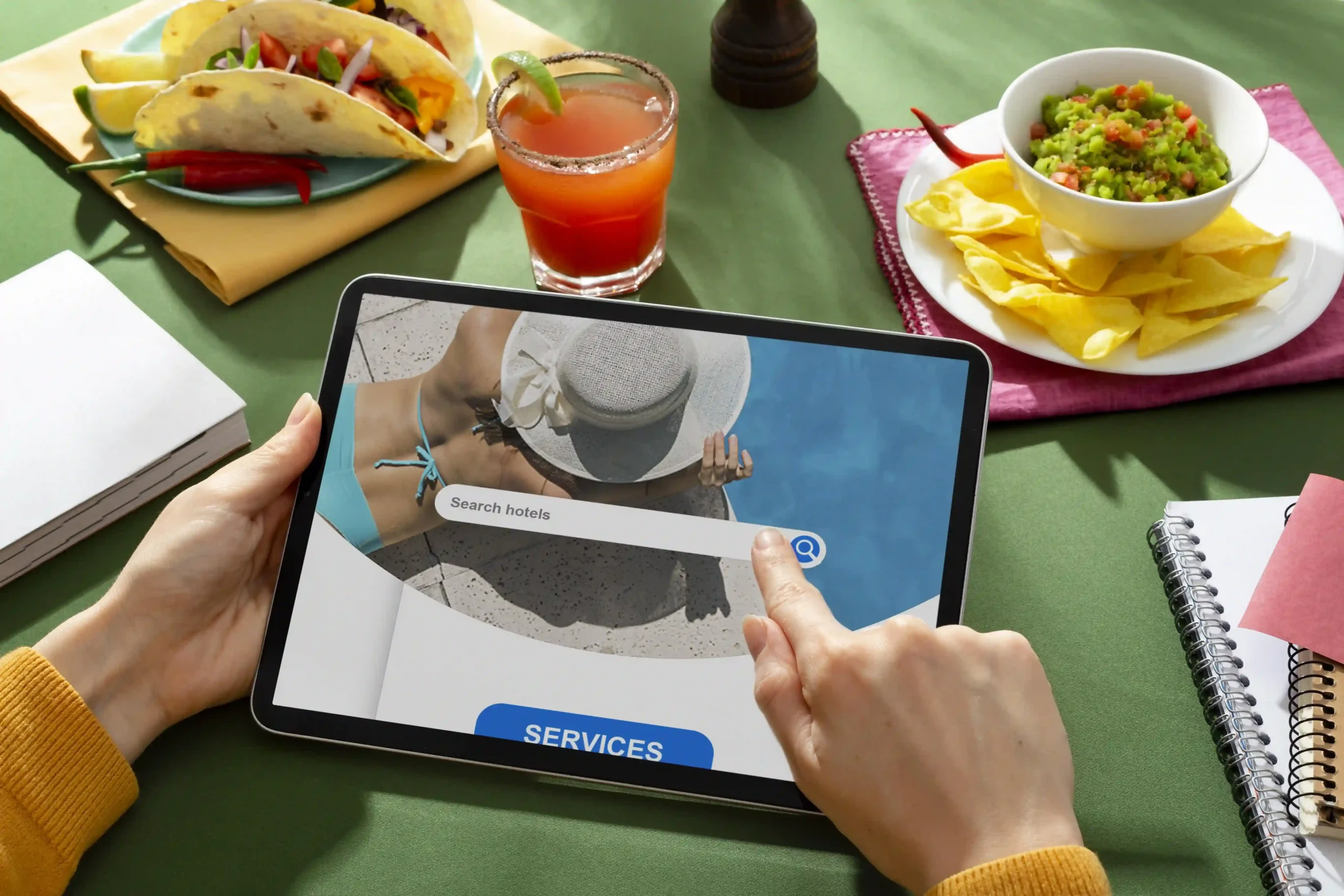Introduction:
In today’s digital age, restaurants constantly seek innovative ways to engage customers and create memorable dining experiences. One such innovation that is gaining popularity is displaying the restaurant menu on TV screen. By leveraging digital technology, restaurants can transform how they present their menus, offering diners a visually captivating and dynamic dining experience.

The Benefits of Restaurant Menus on TV Screens:
Visual Appeal and Engagement:
- Displaying the restaurant menu on TV screens allows for vibrant and visually appealing presentations of menu items, enticing diners with high-resolution images and enticing descriptions.
- Dynamic animations and transitions captivate diners’ attention, encouraging them to explore the menu further and try new dishes.
Real-Time Updates and Customization:
- Unlike traditional printed menus, restaurant menus on TV screens can be easily updated in real-time to reflect menu offerings, prices, or promotions.
- This flexibility enables restaurants to adapt quickly to seasonal changes, specials, or ingredient availability without the hassle and cost of reprinting menus.
Interactive Features and Information:
- TV screen menus can incorporate interactive features such as touchscreens or QR codes, allowing diners to access additional information about menu items, nutritional details, or allergen information.
- Interactive elements enhance the dining experience by empowering diners to make more informed choices and engage with the menu in a personalized way.
Upselling and Promotion Opportunities:
- Dynamic digital menus allow restaurants to upsell and promote high-margin items, specials, or add-ons through strategically placed advertisements or featured sections.
- Eye-catching promotions and limited-time offers displayed on TV screens can entice diners to try new dishes or upgrade their meal, increasing the restaurant’s overall revenue.
Space-saving and Versatility:
- Restaurant menus on TV screens eliminate the need for bulky and cluttered printed menus, freeing up valuable space in the dining area and creating a more streamlined and modern ambiance.
- Additionally, TV screens can serve multiple purposes, such as displaying promotional videos, showcasing chef recommendations, or providing entertainment for diners while they wait.
Implementing Restaurant Menu on TV Screen:
Assessing Restaurant Needs and Objectives:
- Before implementing restaurant menus on TV screens, restaurant owners must identify their specific goals and objectives, whether they’re enhancing the customer experience, increasing sales, or improving operational efficiency.
Choosing the Right Hardware and Software:
- Selecting the appropriate TV screens, mounting options, and digital signage software is crucial for a successful implementation.
- When choosing hardware and software solutions, consider screen size, resolution, durability, and compatibility with content management systems.
Designing Compelling Content:
- Create visually appealing graphics, videos, and animations that showcase menu items, promotions, and brand messaging.
- Tailor content to reflect the restaurant’s unique identity and appeal to target demographics, incorporating branding elements and imagery that resonate with diners.
Placement and Installation:
- Strategically place TV screens in high-traffic areas easily visible to diners, such as near the entrance, bar area, or waiting area.
- Ensure proper installation and maintenance to minimize downtime and maximize the longevity of TV screens and mounting hardware.
Training Staff and Promoting Adoption:
- Train staff on how to use the digital signage software and interact with TV screens to update menus, troubleshoot technical issues, and assist diners with navigating the menu.
- Promote the adoption of restaurant menus on TV screens through signage, social media posts, and in-house announcements, highlighting the benefits of the new digital menu experience.

Future Trends in Restaurant Menus on TV Screens:
Integration with Mobile Devices:
- Integration with mobile apps and devices will enable seamless interactions between TV screen menus and customers’ smartphones, allowing personalized recommendations, mobile ordering, and loyalty program integration.
- Restaurants can leverage mobile devices to enhance the dining experience further, offering interactive features such as mobile payments, digital receipts, and customized preferences.
Enhanced Personalization and Analytics:
- Advanced analytics and AI-driven algorithms will enable restaurants to gather valuable insights into diners’ preferences, behaviors, and ordering patterns.
- Personalized recommendations and targeted promotions based on customer data will optimize menu presentation and drive sales, leading to a more tailored and enjoyable dining experience.
Sustainability and Eco-Friendly Solutions:
- As environmental concerns grow, restaurants will prioritize sustainable and eco-friendly solutions for digital menu screens.
- Energy-efficient displays, recycled materials, and digital signage software optimizations will become standard features in environmentally conscious restaurants, aligning with customers’ values and preferences.
Conclusion:
The restaurant menu on the TV screen represents a powerful tool for enhancing dining experiences, engaging diners, and driving sales. By leveraging digital technology, restaurants can create visually stunning and dynamic menu presentations that capture diners’ attention and inspire them to explore the menu further. As technology continues to evolve, the future of restaurant TV menus holds even more significant potential for delivering personalized, interactive, and sustainable dining experiences that delight customers and set restaurants apart in a competitive industry.





